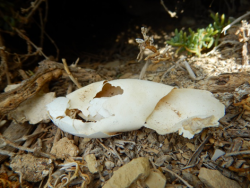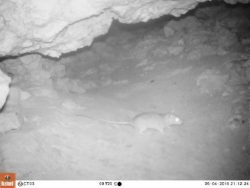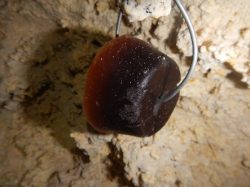Seabirds face many risks during the time they spend on land. In Malta there are three species of seabird that breed within the islands, all of which are nocturnal, meaning they are only active during the night.
The LIFE Arċipelagu Garnija project focuses on the most vulnerable species, the Yelkouan Shearwater (Puffinus yelkouan). The Yelkouan Shearwater breeding season spans from late January to late July with the birds initially returning from their wintering grounds (in the Black Sea mainly) before spending the following months re-establishing territories, laying an egg, and feeding and fledging a chick before returning to the open sea. However, during this entire process the birds are constantly battling against human induced threats.
The most common threat to seabird colonies across the Maltese Islands are the Brown Rat (Rattus norvegicus) and the Black Rat (Rattus rattus). Both of these species of rats – but in particular the Black Rats – have been known to predate on the eggs and hatched chicks of seabirds such as the Yelkouan Shearwater and can have a detrimental effect on entire colonies. Fortunately, there are still some islets within Malta that are rat free and it is on these islets that seabird numbers are thriving. However, these are few and far between and even though Malta will never be rat free (rats have been known to swim between close islands and are often accidentally transported on ships across entire continents) it is possible to actively reduce population numbers through varying methods. The first and most obvious method involves correctly disposing of rubbish in areas where seabirds are known to breed. Areas such as Comino and Cominotto have huge rat populations due to the large numbers of tourists visiting the islets every day during the summer months. Sometimes it may be a few days before the rubbish is collected by the relevant authorities, by which time any organic waste may have already been eaten by rats, thus fueling the population. Once the rat population peaks and the organic waste no longer sustains the ever increasing population then the rats seek alternative food sources such as seabird eggs and chicks. Therefore, if we wish to protect the Yelkouan Shearwater and increase the breeding population within the Maltese Islands then it is imperative that we actively try to reduce the rat population.
The LIFE Arċipelagu Garnija Project team has already started to work within this area by initially assessing islets and cliffs for rat presence using chocolate wax blocks and trap lines. After this current season a number of sites will be chosen to start a regular rat control programme. The sites will be chosen according to the importance of the colonies and the feasibility to be able to check the traps regularly. It is hoped that by doing a long term rat control programme within these sites that the breeding populations of Maltese seabirds such as the Yelkouan Shearwater will gradually begin to increase once more.
By Jenni Godber, Project Warden



